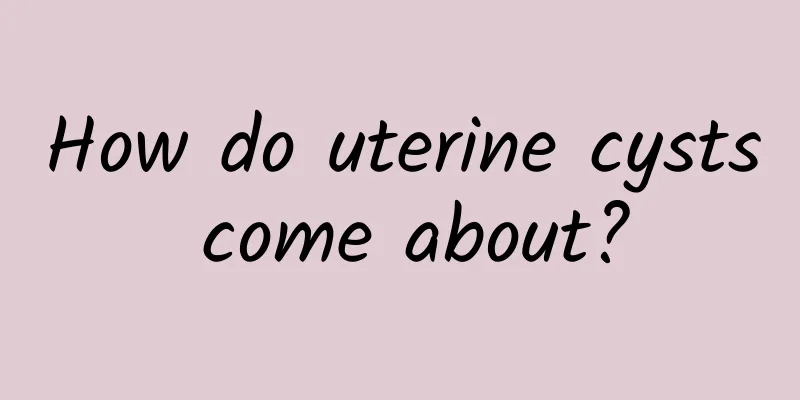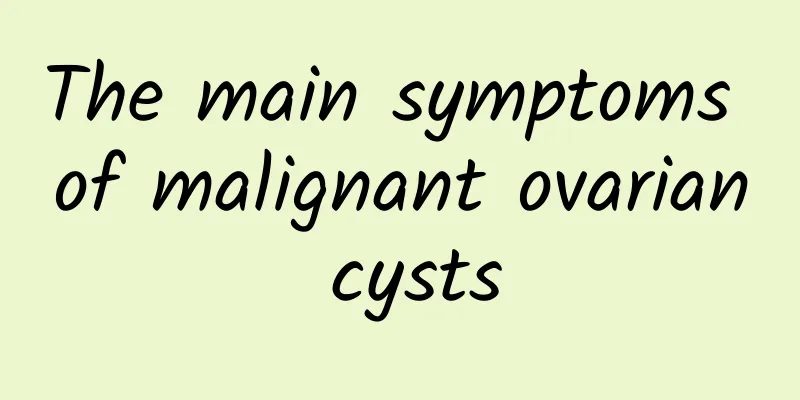How do uterine cysts come about?

|
The formation of uterine cysts may be related to genetics, environment, physiological factors, trauma or pathological changes. Treatment options include observation, drug therapy and surgical resection, and the specific choice depends on the type of cyst and symptoms. 1. Genetic factors: Some uterine cysts may be related to genetics, and people with a similar family history are at higher risk of the disease. It is recommended that women with a family history undergo regular gynecological examinations for early detection and intervention. 2. Environmental factors: Long-term exposure to harmful chemicals or radiation may increase the risk of uterine cysts. Avoiding contact with harmful substances and keeping the living environment clean and healthy can help reduce the probability of disease. 3. Physiological factors: Abnormal hormone levels are a common cause of uterine cysts, especially high estrogen levels. Maintaining hormone balance by adjusting diet, increasing exercise, etc. can reduce the occurrence of cysts. 4. Trauma: Trauma or surgery in the pelvic area may lead to the formation of uterine cysts. Paying attention to protecting the pelvic area and avoiding unnecessary trauma can help prevent cysts. 5. Pathological changes: Endometritis, endometriosis and other diseases may cause uterine cysts. Timely treatment of related diseases and prevention of worsening of the disease are important measures to prevent cysts. Treatments for uterine cysts include observation, medication, and surgical removal. For small, asymptomatic cysts, regular observation to monitor changes is usually recommended. Medication can use hormonal drugs, such as oral contraceptives, to help regulate hormone levels and shrink cysts. Surgical removal is suitable for patients with larger cysts or obvious symptoms. Common surgical methods include laparoscopic surgery and laparotomy. The specific choice depends on the patient's condition. The formation of uterine cysts involves many factors, and the treatment method should be selected according to the specific situation. Regular physical examinations, maintaining a healthy lifestyle and timely treatment of related diseases are the key to preventing and managing uterine cysts. |
<<: What is the reason for frequent bleeding after menopause?
>>: Will cervical adhesions cause infertility?
Recommend
Barley nibbles! Can reduce the risk of cardiovascular disease
Primary and secondary school students have alread...
What are the causes of cervical erosion and bleeding in women? These factors can cause cervical erosion and bleeding
Cervical erosion and bleeding is a relatively ser...
What are the symptoms of chronic cervicitis in women? 4 symptoms of chronic cervicitis in women
There are many diseases that threaten women's...
What are the anti-inflammatory drugs for female cervical erosion? Introduction to the treatment and prevention of female cervical erosion
Cervical erosion is a very common gynecological d...
What are the sequelae of pelvic inflammatory disease? Cause infertility, ectopic pregnancy
Pelvic inflammatory disease is a common gynecolog...
What foods are good for pelvic peritonitis
Is pelvic peritonitis common in daily life? It is...
How much does a painless abortion cost?
How much does a painless abortion cost? Unlike in...
Is laparoscopic surgery possible for ectopic pregnancy? The effect will be better
The incidence of ectopic pregnancy is very high n...
A variety of factors can easily lead to the formation of ectopic pregnancy
In life, there are people who suffer from ectopic...
Several main causes of vulvar leukoplakia
Vulvar leukoplakia is a gynecological disease tha...
A few things to keep in mind before laser treatment of cervical erosion
When using laser to treat cervical erosion, some ...
Comparison of the four magic tools of traditional Chinese medicine: scraping, massage, cupping, and acupuncture
Because of the love of cupping by Brazil's Ri...
How to check for uterine prolapse? Observe the lower part of the body
Uterine prolapse is a very troublesome thing for ...
Why is whey protein so popular as the fitness trend emerges? The reason is…
In recent years, health awareness has risen, fitn...
Experts explain why women are not suitable for painless abortion
In real life, not all female friends are suitable...









